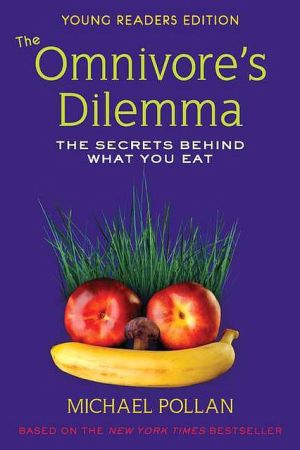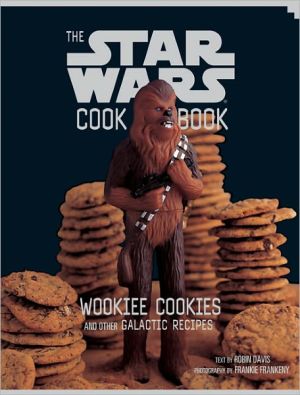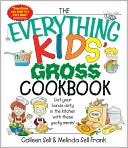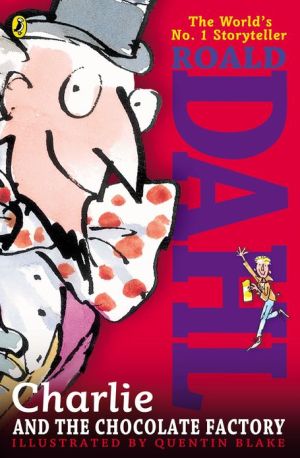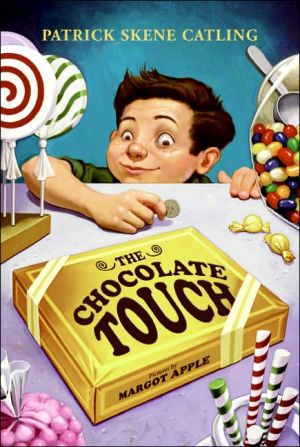The Omnivore's Dilemma for Kids: The Secrets Behind What You Eat
The New York Times bestseller that’s changing America’s diet is now perfect for younger readers\ “What’s for dinner?” seemed like a simple question—until journalist and supermarket detective Michael Pollan delved behind the scenes. From fast food and big organic to small farms and old-fashioned hunting and gathering, this young readers’ adaptation of Pollan’s famous food-chain exploration encourages kids to consider the personal and global health implications of their food choices.\ In a...
Search in google:
A New York Times bestseller that has changed the way readers view the ecology of eating, this revolutionary book by award winner Michael Pollan asks the seemingly simple question: What should we have for dinner? Tracing from source to table each of the food chains that sustain us-whether industrial or organic, alternative or processed-he develops a portrait of the American way of eating. The result is a sweeping, surprising exploration of the hungers that have shaped our evolution, and of the profound implications our food choices have for the health of our species and the future of our planet.Horn Book[T]his book uses a recipe of science, history, and humor to create an edifying yet entertaining story.
INTRODUCTION\ Before I began working on this book, I never gave much thought to where my food came from. I didn’t spend much time worrying about what I should and shouldn’t eat. Food came from the supermarket and as long as it tasted good, I ate it.\ Until, that is, I had the chance to peer behind the curtain of the modern American food chain. This came in 1998. I was working on an article about genetically modified food—food created by changing plant DNA in the laboratory. My reporting took me to the Magic Valley in Idaho, where most of the french fries you’ve ever eaten begin their life as Russet Burbank potatoes. There I visited a farm like no farm I’d ever seen or imagined.\ It was fifteen thousand acres, divided into 135-acre crop circles. Each circle resembled the green face of a tremendous clock with a slowly rotating second hand. That sweeping second hand was the irrigation machine, a pipe more than a thousand feet long that delivered a steady rain of water, fertilizer, and pesticide to the potato plants. The whole farm was managed from a bank of computer monitors in a control room. Sitting in that room, the farmer could, at the flick of a switch, douse his crops with water or whatever chemical he thought they needed.\ One of these chemicals was a pesticide called Monitor, used to control bugs. The chemical is so toxic to the nervous system that no one is allowed in the field for five days after it is sprayed. Even if the irrigation machine breaks during that time, farmers won’t send a worker out to fix it because the chemical is so dangerous. They’d rather let that whole 135-acres crop of potatoes dry up and die.\ That wasn’t all. During the growing season, some pesticides get inside the potato plant so that they will kill any bug that takes a bite. But these pesticides mean people can’t eat the potatoes while they’re growing, either. After the harvest, the potatoes are stored for six months in a gigantic shed. Here the chemicals gradually fade until the potatoes are safe to eat. Only then can they be turned into french fries.\ That’s how we grow potatoes?\ I had no idea.\ A BURGER WITH YOUR FRIES?\ A few years later, while working on another story, I found myself driving down Interstate 5, the big highway that runs between San Francisco and Los Angeles. I was on my way to visit a farmer in California’s Central Valley. It was one of those gorgeous autumn days when the hills of California are gold. Out of nowhere, a really nasty smell assaulted my nostrils—the stench of a gas station restroom sorely in need of attention. But I could see nothing that might explain the smell—all around me were the same blue skies and golden hills.\ And then, very suddenly, the golden hills turned jet-black on both sides of the highway: black with tens of thousands of cattle crowded onto a carpet of manure that stretched as far as the eye could see. I was driving through a feedlot, with tens of thousands of animals bellying up to a concrete trough that ran along the side of the highway for what seemed like miles. Behind them rose two vast pyramids, one yellow, the other black: a pile of corn and a pile of manure. The cattle, I realized, were spending their days transforming the stuff of one pile into the stuff of the other.\ This is where our meat comes from?\ I had no idea.\ Suddenly that “happy meal” of hamburger and fries looked a lot less happy. Between the feedlot and the potato farm, I realized just how little I knew about the way our food is produced. The picture in my head, of small family farms with white picket fences and red barns and happy animals on green pastures, was seriously out of date.\ THE OMNIVORE’S DILEMMA\ Now I had a big problem. I went from never thinking about where my food came from to thinking about it all the time. I started worrying about what I should and shouldn’t eat. Just because food was in the supermarket, did that mean it was good to eat?\ The more I studied and read about food the more I realized I was suffering from a form of the omnivore’s dilemma. This is a big name for a very old problem. Human beings are omnivores. That means we eat plants, meat, mushrooms—just about anything. But because we are omnivores we have very little built-in instinct that tells us which foods are good for us and which aren’t. That’s the dilemma—we can eat anything, but how do we know what to eat?\ The omnivore’s dilemma has been around a long time. But today we have a very modern form of this dilemma. We have a thousand choices of food in our supermarkets, but we don’t really know where our food comes from. As I discovered, just finding out how our potatoes are grown might scare you off french fries for the rest of your life.\ In the past, people knew about food because they grew it or hunted it themselves. They learned about food from their parents and grandparents. They cooked and ate the same foods people in their part of the world had always eaten. Modern Americans don’t have strong food traditions. Instead we have dozens of different “experts” who give us lots of different advice about what to eat and what not to eat.\ It’s one thing to be crazy about food because you like to eat. But I found I was going crazy from worrying about food. So I set out to try to solve the modern omnivore’s dilemma. I decided to become a food detective, to find out where our food comes from and what exactly it is we are eating. My detective work became the book you now hold in your hands.\ FOUR MEALS\ As a food detective, I had to go back to the beginning, to the farms and fields where our food is grown. Then I followed it each step of the way, and watched what happened to our food on its way to our stomachs. Each step was another link in a chain—a food chain.\ A food chain is a system for growing, making, and delivering food. In this book, I follow four different food chains. Each one has its own section. They are:\ Industrial\ This is where most of our food comes from today. This chain starts in a giant field, usually in the Midwest, where a single crop is grown—corn, or perhaps soybeans—and ends up in a supermarket or fast-food restaurant.\ Industrial Organic\ This food is grown on large industrial farms, but with only natural fertilizers, and natural bug and weed control. It is sold in the same way as industrial food.\ Local Sustainable\ This is food grown on small farms that raise lots of different kinds of crops and animals. The food from the farm doesn’t need to be processed, and it travels a short distance—to a farmer’s market, for example—before it reaches your table.\ Hunter-Gatherer\ This is the oldest type of food chain there is. It’s hardly a chain at all, really. It is made up simply of you, hunting, growing, or finding your food.\ All these food chains end the same way—with a meal. And so I thought it important to end each section of the book with a meal, whether it was a fast-food hamburger eaten in a speeding car, or a meal I made myself from start to finish.\ THE PLEASURES OF EATING\ When I was ten years old, I started my own “farm” in a patch of our backyard. From that age until now, I have always had a vegetable garden, even if only a small one. The feeling of being connected to food is very important to me. It’s an experience that I think most of us are missing today. We’re so confused about food that we’ve forgotten what food really is—the bounty of the earth and the power of the sun captured by plants and animals.\ There were parts of this book that were difficult to write, because the facts were so unpleasant. Some of those facts might make you lose your appetite. But the point of this book is not to scare you or make you afraid of food. I think we enjoy food much more if we take a little time to know what it is we’re putting in our mouths. Then we can really appreciate the truly wonderful gifts that plants and animals have given us. To me, that’s the point of this book, to help you rediscover the pleasures of food and learn to enjoy your meals in a new way.\ The Omnivore’s Solution: Some Tips for Eating\ I’ll bet I know your last burning question: “What now?” Now that you know all that you know about the food chains we depend on, how exactly should you fill up your plate? Most of my readers have the same question, so I’ve developed a handful of everyday rules to guide you through the newfound challenges (and possibilities!) of mealtime. (You can find more of them in the book I wrote after The Omnivore’s Dilemma, called In Defense of Food.)\ My advice comes in three parts:\ EAT REAL FOOD.\ That sounds pretty simple, but you now know it’s not so easy to do. There are many things disguised as food in our supermarkets and fast-food restaurants; I call them “edible food-like substances” (EFLS for short) and suggest you avoid them. But how do you tell the difference between real food and EFLS? Here are a few rules of thumb:\ \ Don’t eat anything your great-grandmother wouldn’t recognize as food. Imagine she’s by your side when you’re picking up something to eat. Does she have any idea what that Go-GURT portable yogurt tube is or how you’re supposed to eat it? (She might think it’s toothpaste.) The same goes for that Honey-Nut Cheerios, cereal bar, the one with the layer of fake milk running through the middle, or the (even weirder) cereal “straw.”\ Don’t eat anything with more than five ingredients, or with ingredients you don’t recognize or can’t pronounce. As with the Twinkie, that long ingredient list means you’re looking at a highly processed product—an edible food-like substance likely to contain more sugar, salt, and fat than your body needs, and very few real nutrients.\ Don’t eat anything containing high-fructose corn syrup (HFCS). Think about it: only corporations ever “cook” with the stuff. Avoid it and you will automatically avoid many of the worst kinds of EFLS, including soda.\ \ BUY REAL FOOD.\ To make sure you’re buying real food:\ \ Get your food from the outside perimeter of the supermarket and try to avoid the middle aisles. In the cafeteria, go for the salad bar or the fruit basket. These places are where you still find fresh plant and animal foods that have only been been minimally processed. In the middle aisles of the store—and in the school vending machines—are where most of the EFLS lurk.\ Don’t buy, or eat, anything that doesn’t eventually rot. A food engineered to live forever is usually full of chemicals. Food should be alive, and that means it should eventually die.\ Shop at the farmers market, through a CSA, or at a farmstand whenever you can. Get out of the supermarket, the corner deli, and the gas station, and you won’t find those flashy fake foods.\ Be your own food detective. Pay attention to where your food comes from (were those berries picked in your state or halfway around the world?) and how it is grown (Organic? Grass-fed? Humanely raised?). Read labels and ask questions. What’s the story behind your food? And how do you feel about that story?\ \ EAT REAL MEALS.\ How you prepare and eat food is often just as important as what you eat. So:\ \ Cook. The best way to take control of your meals is to cook whenever you can. As soon as you start cooking, you begin to learn about ingredients, to care about their quality, and to develop your sense of taste. You’ll find over time that, when you prepare and eat real food, fast food gets boring—more of the same old taste of salt, fat, and sugar in every Chips Ahoy! or microwave pizza. There are so many more interesting tastes to experiment with in the kitchen and to experience at the table.\ Garden. The freshest, best-tasting food you can eat is freshly picked food from the garden. Nothing is more satisfying than to cook and eat food you grew yourself.\ Try not to eat alone. When we eat alone we eat without thinking, and we usually eat too much: Just think about how thoughtlessly you can put away a bag of chips or cookies in front of the television or computer, or while doing your homework. Eating should be social; food is more fun when you share it.\ Eat slowly and stop when you’re full. The food industry makes money by getting you to eat more than you need or even want to. Just because they offer a supersized 64-ounce Big Gulp and 1,250-calorie, 5-cup restaurant plate of spaghetti and meatballs doesn’t mean that’s the amount you should eat. Take back control of your portions (a normal-size serving of spaghetti is about a cup and a half).\ Eat at the table. I know, it sounds obvious. But we snack more than we dine these days; 19 percent of the meals consumed in America today are eaten in the car. The deepest joys of eating come when we slow down to savor our food and share it with people we love. The real meal—family and friends gathered around a table—is in danger of extinction. For the sake of your family’s health and happiness, and for your own, do what you can to save it. You might be surprised how much enjoyment it can bring.\
\ From Barnes & NobleAs an adult title, Michael Pollan's The Omnivore's Dilemma became a nationwide bestseller and notched a place on the New York Times list of the five best nonfiction books of 2006. This young readers' edition widens the potential audience of this classic about the personal and global implications of our food choices. In addition to being reshaped for readers ages 9-12, The Omnivore's Dilemma for Kids contains new and updated material.\ \ \ \ \ BooklistJust as powerful as the adult edition but perfectly tuned to a young audience, this title is essential food for thought.\ \ \ Publishers WeeklyThis youth-friendly version of Pollan's bestseller, with updated facts, assorted visuals and a new introduction and afterword, is as enlightening as it is accessible. The adaptation uses the same “four meal” format of the original book, as Pollan describes the impact of humans' heavy corn consumption, explores the organic food industry, takes part in the system of farming practiced at Polyface Farm and hunts mushrooms and wild pigs. Much of the appeal lies in Pollan's hands-on methods and sensitive articulations as he assists readers in navigating the complexities of the production and consumption of food. Conscientious readers will grasp the important lessons. Ages 10–up. (Oct.)\ \ \ \ \ Horn Book[T]his book uses a recipe of science, history, and humor to create an edifying yet entertaining story.\ \ \ \ \ VOYA\ - Marla K. Unruh\ Seeing potatoes treated with poisonous chemicals on gigantic farms and smelling mountains of manure on cattle feedlots were experiences that had a dramatic impact on the author's view of fast food. He decided to become a food detective, and embarked on a one-man odyssey to investigate four different food chains: industrial, industrial organic, local sustainable, and hunter-gatherer. He helped plant corn on a farm in Iowa, and then bought a steer and followed its course through a feedlot in South Dakota. Next he visited big organic farms in central California to see vegetables being grown without chemicals. He worked on a self-sustaining family farm in Virginia, moving cattle and butchering chickens. Last of all, he learned to hunt for his own food under the tutelage of friends in northern California. At each stop he ate a meal of the foods from that type of production. For his finale, he prepared a dinner for his friends consisting entirely of foods he had grown, gathered, or hunted. Adapted by Richie Chevat for the young reader, this edition of the original bestseller is accessible and thought provoking, with black-and-white visuals that reinforce his points. Pollan's entertaining narration will motivate socially conscious youth to vote with their forks, as he urges. Young readers—and older ones, too—will find their thinking about food forever changed. Reviewer: Marla K. Unruh\ \ \ \ \ School Library JournalGr 7 Up—Based on Pollan's best-selling adult book of the same title, this (slightly) shortened version will appeal to thoughtful, socially responsible teens. The book is divided into four sections: "The Industrial Meal" (exemplified by the fact that only two companies, Cargill and ADM, buy nearly a third of all the corn grown in the U.S.); "The Industrial Organic Meal" (covering most of what's found in stores like Whole Foods); "Local Sustainable" (small farms typically based on grass, not corn); and what he calls the "Do-It-Yourself Meal" (where he hunts a wild pig and gathers wild mushrooms). Pollan has done an amazing amount of research, both of the typical kind (there are 16 pages of footnotes) and the more personal kind. His own research includes slaughtering a chicken himself and eating a fast-food meal in a moving car with his family. He explains complicated issues clearly, offers compelling evidence of the environmental damage done by what he calls the industrial meal, and urges readers not to look away from animal-welfare issues: "We can only decide if we know the truth." An afterword, "Vote with Your Fork," recommends simple actions that will improve the health of our bodies, our society, and our planet.—Lauralyn Persson, Wilmette Public Library, IL\ \ \ \ \ Kirkus ReviewsNot every volume will change a reader's life, but this one just might. The dilemma is this: Human beings are omnivores; we can eat just about anything, but how do we know what's best to eat? Adopting the role of food detective, the author "peers behind the curtain" of the modern food industry and finds that the industrial approach to the food chain imperils our health and planet. The four sections of the volume describe differing types of meals: industrial; industrial organic; local sustainable; and hunted, gathered and found. Clear organization and lively writing rooted in fascinating examples make this accessible and interesting. The source notes and bibliography are thorough. Though some readers may find more about certain topics than they care to know-corn, for example-motivated kids will learn much about where their food comes from and what to do about it, and they may want to seek out the follow-up volume for adults, In Defense of Food (2008). (index, not seen) (Nonfiction. 11 & up)\ \ \ \ \ Children's Literature\ - Meredith Kiger\ Originally written for adults and now adapted for teens, this must-read book reveals much of what you need to know about the foods you put into your body on a daily basis. For example, who could have known that so many of the foods we eat daily contain corn derivatives? The author explores the rise in corn consumption over the last 30+ years and how agricultural production has changed overall. The book, divided into four parts, explores corn: the industrial meal, the industrial organic meal, the local sustainable meal and the do-it-yourself meal. In addition to unmasking the corn caper, the author looks at the industrialization of the organic movement, the experience of animals raised for human consumption and hunting, and gathering and growing your own food. You would think this subject would be boring and scary but is actually quite interesting in the author's hands. Pollan literally takes a hands-on approach to exploring many facets of the food production industry. Mainly, he presents the scenarios so that you can make up your own mind. Our mindless consumption of food products in this country has gotten us into heaps of trouble healthwise, with great consequences in other areas, as well. Everyone, including younger readers, need to educate themselves about what they eat. A chapter by chapter bibliography and an index are included. Occasional black-and-white photos, boxed statements and graphic information enhance the text. Reviewer: Meredith Kiger, Ph.D.\ \
